After bringing back an Olympus XA into the now rather expanding stable of 35mm cameras I’ve amassed, I chanced upon another small compact that I’d had hold of many years ago, though never used; it actually belonged to the chap who would become my father-in-law!
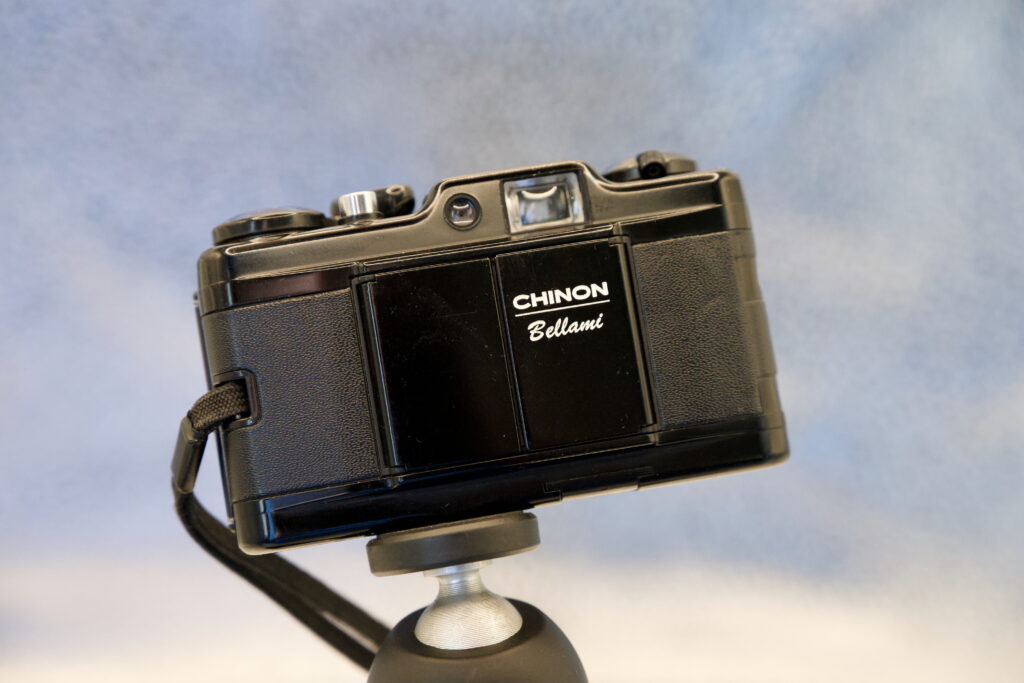
Intrigued at the time more by how it operated as opposed to how well it worked, for obvious reasons as we’ll see. The Chinon Bellami was a competitor to the Olympus XA2 rather than the XA itself, as it’s a zone focus camera rather than a true rangefinder. During the early 80’s when both the XA2 and Bellami appeared, small 35mm compacts were a popular product, especially those which were pocketable, well over a dozen similar models of varying capability and complexity existed, from at least 10 different manufacturers. This was largely due to the market at the time, possibly being segregated more than it is now until recently, you either use your mobile, or use a DLSR/Mirrorless camera; the decline in sales of small digital compacts generally attributed to the rapid improvements in phone camera capabilities and output quality.
Back in the 80s one set of users tended to be those wanting really simple and easy to use cameras who gravitated to 110 or maybe the older 126 format models. Both these used a film cartridge, making them very easy to load, though the size of the negatives, especially on 110, made them more suited to producing the classic 6×4 prints many still have boxes of stashed in the attic, rather than anything larger. At the other end of the scale were those, like me at the time, invested in a 35mm SLR with extra lenses and flash guns, etc, eager to produce more than just holiday snaps and maybe shoot something worth printing to display on the wall at home, or bore friends to death with should they dare to visit, with a slide show.
Somewhere in-between was the market for the 35mm compact, especially the pocketable modes like the Bellami. You either wanted access to a wider range of film, Kodak 110 slide film ceased production in 1982, wanted a bit more control over your shooting, most 110 cameras were very much point an click (Though I could be tempted by a Pentax 110 SLR!), or you were an SLR user and wanted something as a cheap “second body” or more a more discreet but capable camera for travel maybe. Those of a certain age will remember David Bailey’s commercials for Olympus’s classic Trip 35, which generally reappeared on a yearly basis just in time for the holiday season. (I’ve restored two Trip 35s and still own one, they are a far better camera than many believe)
As for the manufacturer, Chinon were generally known more for their more basic 35mm compacts and budget 35mm SLRs which usually graced the shelves of Dixons stores in the UK. Their CS, CG and CM series used the Pentax PK bayonet mount, giving them access to a huge range of lenses, not only from Pentax. In the process, this gave the beginning photographer a stepping stone towards something more up market later on that also used PK lenses, whilst retaining their investment in “glass”.
The arrival of the Bellami therefore came something of a surprise, but what makes the it unique is how it hides the lens when not in use, its possibly one of the last cameras to have paper bellows! Unlike the XA series and Cosina’s CX models which protect the lens behind a sliding shell or twisting cover respectively, the Bellami extends and retracts its lens behind a pair of “barn doors”. It does this using the film advance lever and will only open these doors and extend the lens when the shutter is primed. So you can leave the camera ready to fire, but have the lens retracted, only needing to move the advance lever sufficiently to pop the doors open and crank the lens out in the process the next time you want to take a shot.
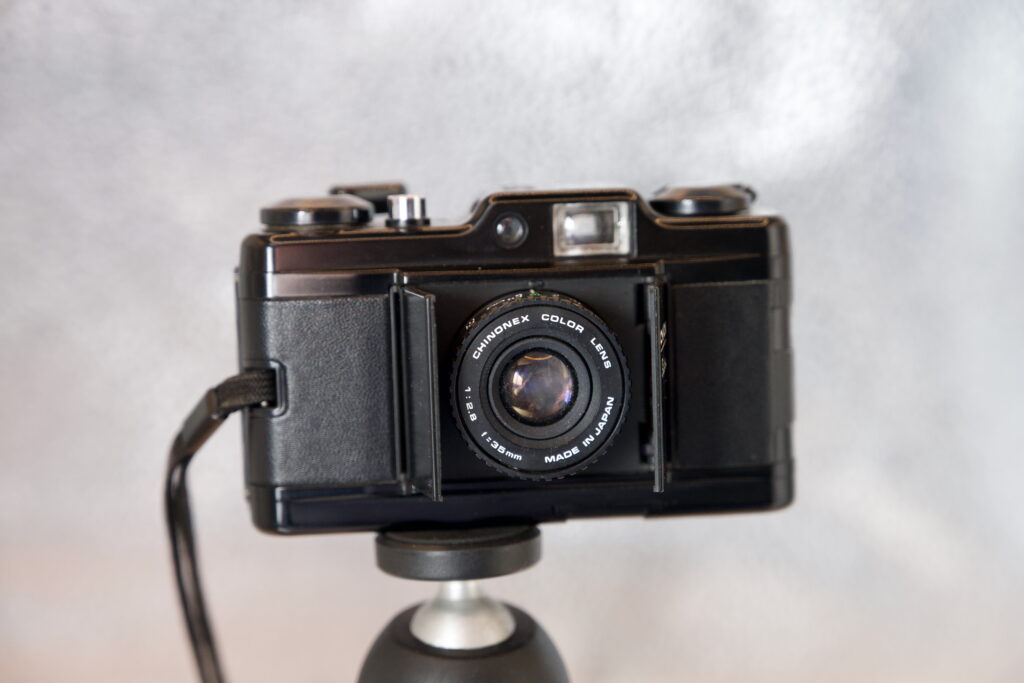
Much like their Olympus contemporaries, the Bellami also came with an equally diminutive dedicated flash unit, the S-120, which in similar fashion you screwed on to the side of the camera body when needed. Again it took power from a single AA battery, with the customary glacial initial charge time and also limited capability, but for short distance shots indoors, adequate. Which, as it’s a small compact, there’s no hot shoe or PC sync socket either to attache to a bigger flash, is perhaps as well. One concession to improve your photos, is the on off switch that has a daylight sync position, used when you need some fill-in flash to illuminate a backlit subject. Other than that, the flash is optimised for either ISO 100 or ISO 400 film, if you’re not using either of those, you have to use the one you’re closest to and consult the little distance scale on the rear.
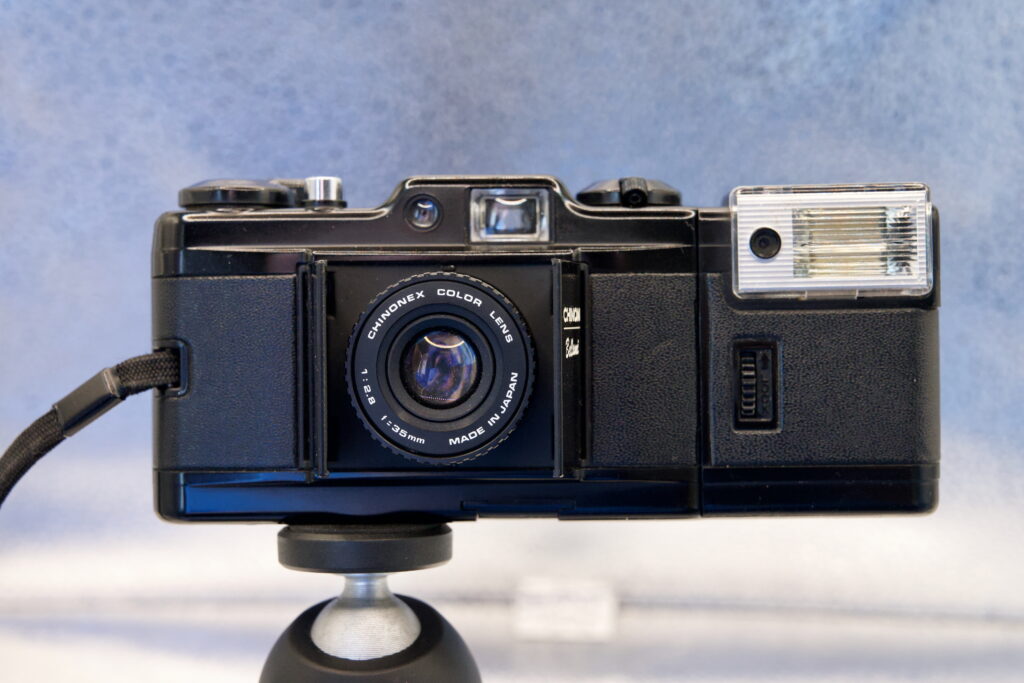
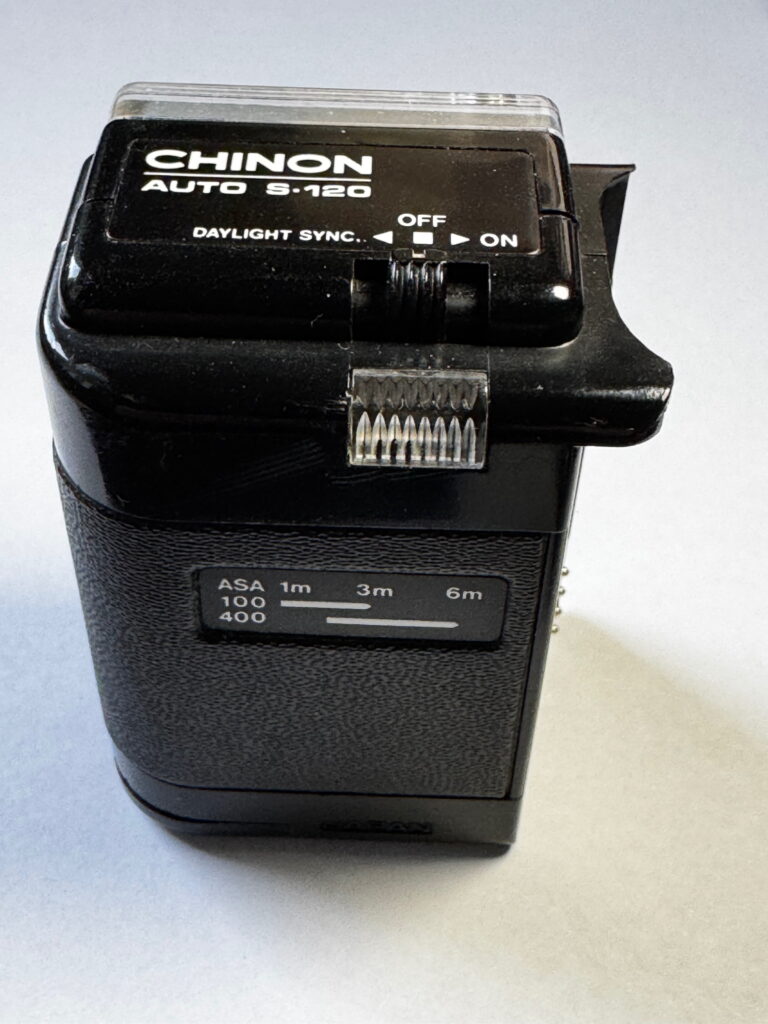
In general use, it’s very much “of the time”, offering just enough control to set the camera up, but without over complicating things. Film speed settings go from ISO 25 to 400, selected by a wheel at the side of the viewfinder, adjacent to the shutter button, and if you’ve thick fingers a tad awkward as a result, there’s no DX encoding support either. Behind the window that displays the film speed is a recessed green LED which will illuminate if you press the shutter button, indicating the battery is OK. With no power, the shutter will not fire at all. Metering is a Cds sensor powered by a pair of SR44 or LR44 cells, which are still readily available thankfully, no need for adaptors or disassembly to solder voltage droppers in as you have to do on some models.
Focusing is zonal by distance, achieved by rotating the sleeve around the lens, with distance markings in white displayed on the top of the sleeve for 1, 1.5, 2, 3, and 5 metres, plus infinity. At 3m, the markings are green and there’s a detent as you rotate the sleeve, which the instructions say is the “safe focusing” setting, that I’ll have to investigate! The lens itself is a 35mm f2.8, giving the classic street photography field of view, whilst the viewfinder only has framing marks, and no parallax correction.
Exposure is entirely automatically, with a shutter speed range going from a rather slow 1/8th up to 1/1000th. A red LED sits at the side of the viewfinder, but hard to miss when you’re looking through it, which illuminates at speeds below 1/30th second, though the camera will not prevent a shot being taken at speeds liable to induce the jitters.
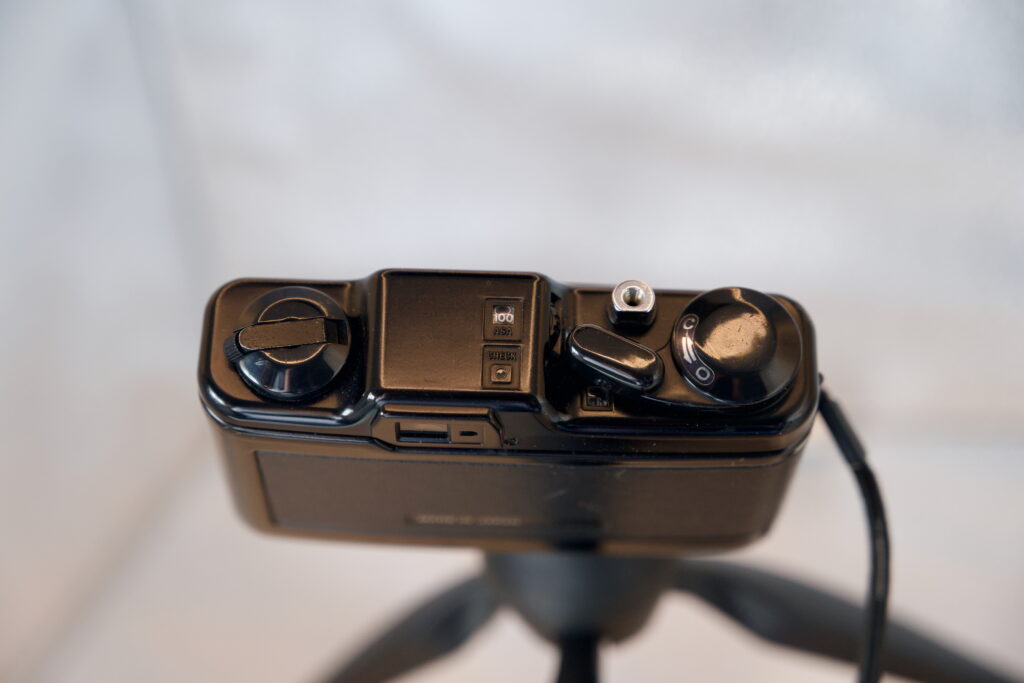
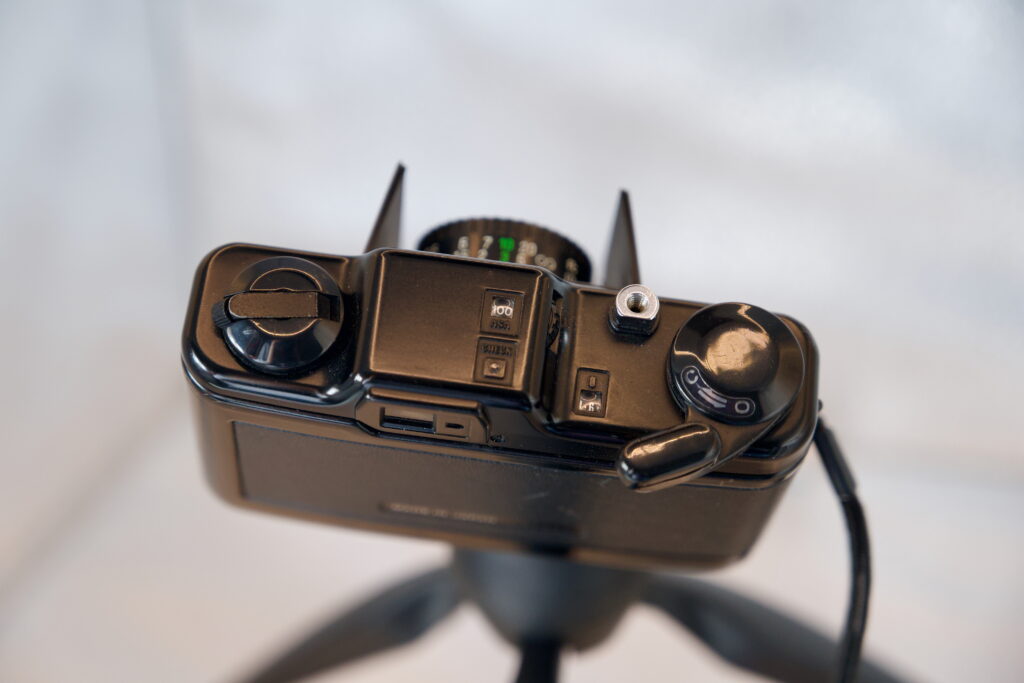
There really is little more to the Bellami, it has a nice weight to it, feels sturdily built, doesn’t suffer from the covering material falling off, you can’t lose the small wrist strap as that’s a permanent fixture unless you snip the metal fastening, and minus the flash unit it’s eminently pocketable. Virtually the whole production run was all black in colour, but a limited “Anniversary” edition appeared late in the day with either red or grey suede covering and a gold horse and stagecoach on the barn doors. You can guess the price of this model should you find one! There was also a near identical rebranded version built for German retailer Photo-Quelle as the Revue 35 CC, which do appear on eBay, but as the Chinon original is cheaper in the UK, it depends how unique you want to be.
As ever, the Ballami I acquired needed new light seal foam, but at least there was only one thin run needed, so I used one of the spare strips from a previous renovation for that. The rest of the foam covers a large area of the film access door, making removal and replacement a doddle.
Fiddling around replacing seals and such on the film cameras got me thinking, and gave me a chuckle. In digital terms, “full frame” has, since they became readily available, been the thing to aim for unless, much like their film brethren used to be, you have really deep pockets and get into medium format. As mentioned before, the actual sensor area on a full frame digital camera covers the same as that of a single 35mm film frame. What made me laugh whilst I had the minuscule 220g Bellami in one hand and a firm grip of the Nikon ZF at 4 times the weight plus lens in the other, was how much electronics is needed to make the sensor useful, when compared to layers of chemical in film which needs light plus more chemicals to develop. No, you can’t do all the things with film you can with digital, and I definitely don’t have sufficient masochistic tendencies to want to fully revert to using film all the time either. But you do wonder sometimes where we’ll go next, when it’s the image you take that’s the important bit.
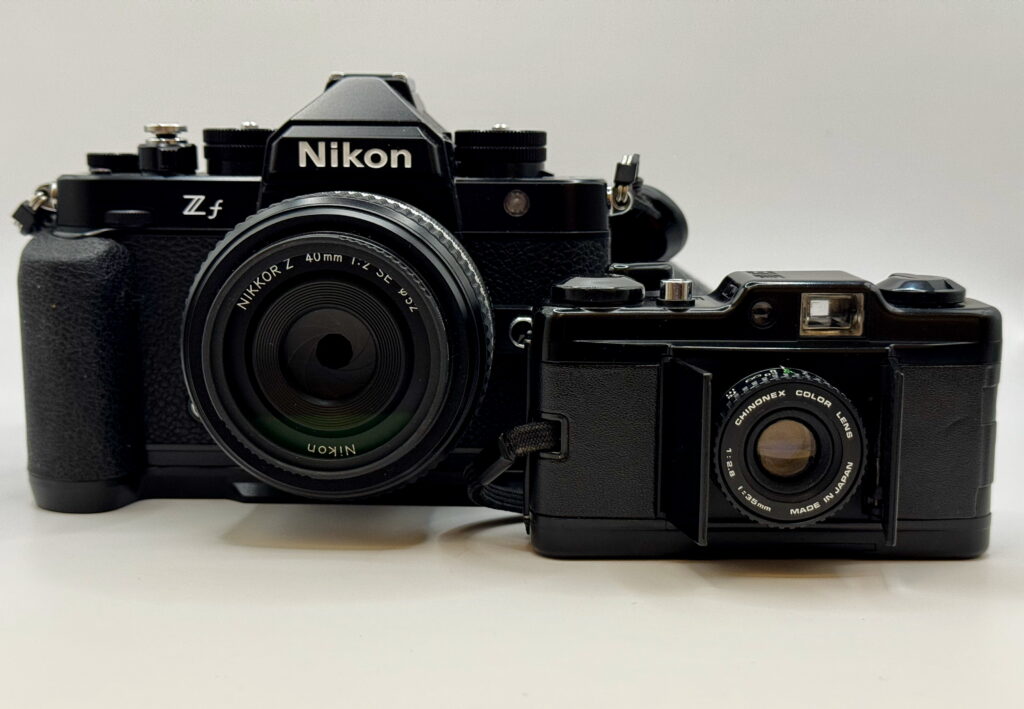
A roll of B&W Fomopan 100 is currently being run through the Bellami, so watch out for an update to see what it can do, let alone see if the thing actually works correctly!
